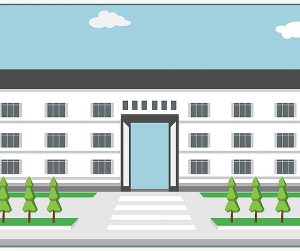Tips on How to Grow a School: Growing a school is the process of creating and enhancing it to meet the evolving requirements of students and the community. This may entail raising enrollment numbers, raising academic requirements, and introducing fresh programs and services. It necessitates a strategic approach that considers the school’s assets, capabilities, and limitations as well as the needs of the community it serves.
Additionally, growing a school may involve strengthening partnerships with local organizations and institutions, expanding its physical infrastructure, and utilizing technology and other resources to support learning and enhance academic achievement. The goal is to create an engaging learning environment that welcomes all students, promotes their achievement, and equips them for the challenges that lie ahead.

This article will walk you through the fundamental steps to growing your school. Note that to grow a school, it is important to have a clear vision, strong leadership, and a commitment to continuous improvement. This may involve engaging with stakeholders, such as students, teachers, staff, parents, and community members, to gather their feedback and insights, and incorporate these into the school’s growth plans.
Recommended: Jobs That Don’t Require A Degree Or Experience
10 Tips on How To Grow/Run A School
1. CONDUCT A NEEDS ASSESSMENT: Conducting a needs assessment is a crucial first step in expanding a school since it identifies community needs and wants and shows how the school can fulfill them. A needs assessment, which can come in a variety of forms, such as surveys, focus groups, and market research, can offer important details about the community and the educational environment as they stand at the moment. The school can better serve the needs of its students and families by adjusting its activities, services, and resources in accordance with the requirements of the community.

For instance, if a requirements analysis reveals a strong demand for STEM (Science, Technology, Engineering, and Mathematics) programs, the institution may decide to enhance or increase its current STEM program offerings. Additionally, a needs assessment can help the school understand the competition and identify gaps in the education market that the school can fill.
This information can then be used to develop a strategic plan that aligns with the needs and wants of the community and positions the school for growth and success.
Also see: Will AI/Robots Replace Programmers? See Answer
2. DEVELOP A STRATEGIC PLAN: Developing a strategic plan is a systematic and comprehensive process of defining the vision, mission, goals, and objectives of an organization, and determining the action steps and resources necessary to achieve those objectives. In the context of a school, developing a strategic plan can help in growing the school in several ways:

a. Define the Vision and Mission: Developing a clear vision and mission statement for the school will provide direction and focus for all decision-making and activities. This can help ensure that all stakeholders are working towards common goals and can improve the school’s reputation and competitiveness.
b. Identify Key Priorities: A strategic plan allows the school to prioritize its goals and objectives, ensuring that resources are allocated to the areas that are most critical to achieving its vision and mission. This can help the school to make the most of limited resources and to focus its efforts on the most impactful initiatives.
c. Align Resources: A strategic plan can help the school to align its resources, including personnel, budget, and technology, with its goals and objectives. This can help to ensure that the school is using its resources effectively and efficiently and that it can make the most of its opportunities.
d. Foster Collaboration and Partnership: A strategic plan can help to foster collaboration and partnerships between the school and other stakeholders, such as parents, educators, and community organizations. This can help to improve the school’s reputation and to increase its ability to achieve its goals and objectives.
e. Monitor Progress and Evaluate Results: A strategic plan should include specific measures of success and regular progress reports to monitor progress and evaluate results. This can help the school to identify areas that need improvement, to refine its strategies and approaches, and to make course corrections as necessary to achieve its vision and mission.
Recommended: Countries With The Highest Job Opportunities
3. BUILD A STRONG BRAND: Building a strong brand is a crucial step in growing a school. A strong brand sets a school apart from its competitors, builds trust and credibility with potential students and their families, and helps to create a sense of community and identity among students, staff, and other stakeholders.

By establishing a clear and consistent brand message, a school can attract new students, retain existing ones, and generate a positive reputation in the education community. Additionally, you can create a brand identity that accurately reflects your school’s values, mission, and target market. This can include a logo, slogan, and website.
4. IMPROVE THE CURRICULUM: Improving a school curriculum is an essential aspect of growing a school, as it provides the foundation for the quality of education that students receive. A well-designed and up-to-date curriculum can help to attract more students, improve student engagement and achievement, foster critical thinking skills, and promote collaboration.
Ensure that your school’s curriculum is relevant, engaging, and up-to-date. Consider offering new programs and courses to attract students.
Recommended: Best Hospitals in the World
5. ENHANCE THE LEARNING ENVIRONMENT: It is necessary to enhance the learning environment in order for a school to grow and provide students with a rewarding and efficient educational experience. The physical and emotional climate of the school has a direct impact on student’s motivation, engagement, and overall academic accomplishment. There are several ways in which this can be achieved, including:

a. Improving classroom design and technology: Building a well-equipped classroom with cutting-edge technology can improve students’ learning experiences and make the learning process more dynamic and engaging.
b. Fostering a positive school culture: Creating a positive and inclusive school culture where students feel safe, respected, and valued can significantly enhance their learning experience.
Encouraging active and collaborative learning: Encouraging active learning through hands-on activities, group projects, and discussion can improve student engagement and foster critical thinking skills.
c. Providing access to diverse resources: Providing students with access to a wide range of resources, including books, technology, and knowledgeable teachers, can help create a rich and supportive learning environment.
Recommended: Most Dangerous People In the World 2023
6. FOSTER STRONG RELATIONSHIPS: Fostering strong relationships is a critical component of growing a school. Strong relationships between students, teachers, parents, staff, and community members can help create a supportive and inclusive learning environment, which can have numerous benefits for the school’s growth like Improving student learning outcomes and Building a Positive School Culture amongst others.

7. EXPAND YOUR REACH: Expanding your reach is a key factor in growing a school, as it increases the visibility of the school and attracts more students. By reaching out to a wider audience, a school can showcase its programs, teachers, and unique features, which can help to differentiate it from other schools and make it an attractive choice for families.
By expanding your reach, a school can build a strong community of students, families, and educators that supports its mission and goals. Additionally, expanding your reach can also provide valuable opportunities for networking and collaboration with other schools, organizations, and education leaders, which can help to further enhance the school’s reputation and visibility.
You can widen your audience by using marketing and advertising, (Publicize the school on websites that support families and education, on social media, and in local newspapers), outreach programs (Partner with neighborhood groups to provide classes and workshops showcasing the school’s programs and instructors, such as libraries and community centers), a strong online presence through a website, social media, and search engine optimization (SEO) is necessary to reach a larger audience, etc.
Recommended: Countries With The Most Beautiful Women In The World 2023
8. EVALUATE AND REFINE: Evaluate and Refine is a method that can be used to grow a school and improve its effectiveness. It entails constantly assessing the school’s operations and performance to spot opportunities for development, then enhancing those areas to boost effectiveness, efficiency, and overall success. This strategy can support a culture of continual improvement while assisting schools in staying current and adjusting to shifting educational demands.
Schools can make sure they are giving their children the greatest education possible by regularly assessing and improving important areas like the curriculum, teacher development, student support, and operational systems. Additionally, integrating teachers, staff, and parents in the evaluation and improvement process can strengthen the school community’s overall involvement and commitment by fostering a feeling of shared ownership and accountability.
Recommended: Richest Men In Nigeria And Their Networth
9. Make the proper hires: You must understand that instructors spend more time with the pupils and interact with them, therefore if you choose poorly when recruiting, your students might suffer greatly as a result. And before you and other school officials realise it, the harm could already be done.

school successfully
Again, selecting educators who are resentful for one reason or another might turn people against you or your children. As a result, you should make an effort to conduct extensive study before selecting your school’s administrators. Aside from that, you wouldn’t want to place a criminal or a covert paedophile among your students. Hire smart individuals who like spending time with children and who share your vision.
10. Create some performance metrics: Of course, the key metric you may use to gauge performance is satisfaction. There are other others. Have you considered the success rates for exams and certifications, hours wasted due to instructor cancellations, and referral rates?
There are several measurable methods of gathering data that might aid you and your instructors in improving together, depending on what you want your school to accomplish. You may use performance indicators to inform how you design your incentives.
Recommended: Most Beautiful Cars In The World
Conclusion
These are just a few basic steps to help you grow a school. Remember, growing a school takes time, effort, and resources, so it’s important to be patient and stay focused on your goals.

Edeh Samuel Chukwuemeka, ACMC, is a lawyer and a certified mediator/conciliator in Nigeria. He is also a developer with knowledge in various programming languages. Samuel is determined to leverage his skills in technology, SEO, and legal practice to revolutionize the legal profession worldwide by creating web and mobile applications that simplify legal research. Sam is also passionate about educating and providing valuable information to people.